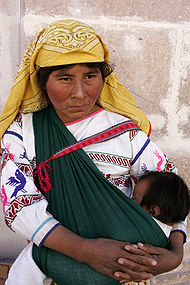- Indigenous peoples of Mexico
-
This article is about the indigenous peoples of Mexico. For other indigenous peoples see Indigenous peoples (disambiguation)
Indigenous peoples of Mexico 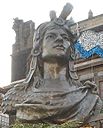
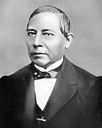
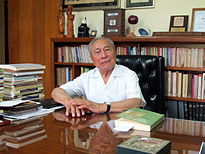
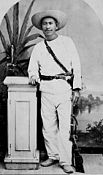
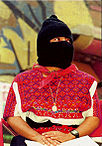
Notable Indigenous Mexicans:
Cuauhtémoc, Benito Juárez
Francisco Luna Kan
Cajemé, Comandante RamonaTotal population 10,103,517[1] Regions with significant populations Mexico Languages Nahuatl, Yucatec, Tzotzil, Mixtec, Zapotec, Otomi, Huichol, Totonac and other living 54 languages along the Mexican territory, as well as Spanish.
Religion Christianity (Predominantly Roman Catholic, with an Amerindian religious elements, including Aztec and Mayan religion.)
Related ethnic groups Mexico, in the second article of its Constitution, is defined as a "pluricultural" nation in recognition of the diverse ethnic groups that constitute it, and in which the indigenous peoples[2] are the original foundation.[3] According to the National Commission for the Development of Indigenous Peoples (Comisión Nacional para el Desarrollo de los Pueblos Indígenas or CDI in Spanish) and the INEGI (official census institute), there are 10.1 million indigenous people in Mexico,[4] of many different ethnic groups,[1] which constitute 9.8% of the population in the country.
The indigenous peoples in Mexico have the right of free determination under the second article of the constitution. According to this article the indigenous peoples are granted:
- the right to decide the internal forms of social, economic, political and cultural organization;
- the right to apply their own normative systems of regulation as long as human rights and gender equality are respected;
- the right to preserve and enrich their languages and cultures;
- the right to elect representatives before the municipal council in which their territories are located;
amongst other rights. Also, the Law of Linguistic Rights of the Indigenous Languages recognizes 62 indigenous languages as "national languages" which have the same validity as Spanish in all territories in which they are spoken.[5] According to the National Institute of Statistics, Geography and Data Processing (INEGI), approximately 5.4% of the population speaks an indigenous language – that is, approximately half of those identified as indigenous.[6] The recognition of indigenous languages and the protection of indigenous cultures is granted not only to the ethnic groups indigenous to modern-day Mexican territory, but also to other North American indigenous groups that migrated to Mexico from the United States[7] in the nineteenth century and those who immigrated from Guatemala in the 1980s.[8]
Contents
History of the indigenous peoples
Pre-Columbian Civilizations
See also: Mesoamerican chronologyThe pre-Columbian civilizations of what now is known as Mexico are usually divided in two regions: Mesoamerica, in reference to the cultural area in which several complex civilizations developed before the arrival of the Spanish in the sixteenth century, and Aridoamerica (or simply "The North")[9] in reference to the arid region north of the Tropic of Cancer in which few civilizations developed and was mostly inhabited by nomadic or semi-nomadic groups[citation needed]. Mesoamerica was densely populated by diverse indigenous ethnic groups[9][10] which, although sharing common cultural characteristics, spoke different languages and developed unique civilizations.
One of the most influential civilizations that developed in Mesoamerica was the Olmec civilization, sometimes referred to as the "Mother Culture of Mesoamerica".[10] The later civilization in Teotihuacán reached its peak around 600 AD, when the city became the sixth largest city in the world,[10] whose cultural and theological systems influenced the Toltec and Aztec civilizations in later centuries. Evidence has been found on the existence of multiracial communities or neighborhoods in Teotihuacan (and other large urban areas like Tenochtitlan).[11][12] The Maya civilization, though also influenced by other Mesoamerican civilizations, developed a vast cultural region in south-east Mexico and northern Central America, while the Zapotec and Mixtec culture dominated the valley of Oaxaca, and the Purepecha in western Mexico.
Colonial Era
By the time of the arrival of the Spanish in Mesoamerica, many of the diverse ethnic civilizations (with the notable exception of the Tlaxcaltecs and the Tarascan Kingdom of Michoacán) were loosely joined under the Aztec empire, the last Nahua civilization to flourish in Central Mexico. The capital of the empire, Tenochtitlan, became one of the largest urban centers in the world, with an estimated population of 350,000 inhabitants.[9] During the conquest of the Aztec Empire, the conquistadores, only a handful compared to the millions of indigenous peoples, used the ethnic diversity of the country and exploited the discontentment of the subjugated groups, making important alliances with rivals of the Aztecs.[9] While the alliances were decisive to their victory, the indigenous peoples were soon subjugated by an equally impressive empire. Wars and forced labor were accompanied by the spread of European diseases previously unknown in the New World. Pandemics wrought havoc, killing between 90% and 95% of the pre-contact population according to some estimates.[9]
At first, the colonial system imposed a system of castes, in which the indigenous peoples were marginalized.[13] Nevertheless, a cultural symbiosis took place: the indigenous peoples adopted and syncretized Roman Catholicism, and a new ethnic group was born: the mestizo, of mixed European and indigenous ancestry.
Independence from Spain
As the New Spain got independence from Spain, its citizens decided to name the new country after its capital city, Mexico City. Mexico declared the abolition of slavery and the equality of all citizens under the law. Some indigenous individuals integrated into the Mexican society, like Benito Juárez of Zapotec ethnicity, the first indigenous president of a country in the New World.[14]
The greatest change, however, came about as a result of the Mexican Revolution, a violent social and cultural movement that defined 20th century Mexico. The Revolution produced a national sentiment that the indigenous peoples were the foundation of Mexican society. Several prominent artists promoted the "Indigenous Sentiment" (sentimiento indigenista) of the country, including Frida Kahlo, and Diego Rivera. Throughout the twentieth century, the government established bilingual education in certain indigenous communities and published free bilingual textbooks.[15] Some states of the federation appropriated an indigenous inheritance in order to reinforce their identity.[16]
In spite of the official recognition of the indigenous peoples, the economic underdevelopment of the communities, accentuated by the crises of the 1980s and 1990s, has not allowed for the social and cultural development of most indigenous communities.[17] Thousands of indigenous Mexicans have emigrated to urban centers in Mexico as well as in the United States. In Los Angeles, for example, the Mexican government has established electronic access to some of the consular services provided in Spanish as well as Zapotec and Mixe.[18] Some of the Maya peoples of Chiapas have revolted, demanding better social and economic opportunities, requests voiced by the EZLN[citation needed].
The government has made certain legislative changes to promote the development of the rural and indigenous communities and the preservation and promotion of their languages. The second article of the Constitution was modified to grant them the right of self-determination and requires state governments to promote and ensure the economic development of the indigenous communities as well as the preservation of their languages and traditions.
Demographics
Main article: Demographics of MexicoIndigenous people from all parts of Mexican state of Oaxaca, participate wearing traditional clothes and artifacts, in a celebration known as Guelaguetza.
Definition
The number of indigenous Mexicans is judged using the political criteria found in the 2nd article of the Mexican constitution. The Mexican census does not report racial-ethnicity but only the political-ethnicity of indigenous communities who hold political autonomy and preserve their indigenous languages, traditions, beliefs, and cultures.[19]
Languages
Main article: Languages of MexicoThe Law of Linguistic Rights of the Indigenous Languages recognizes 62 indigenous languages as "national languages" which have the same validity as Spanish in all territories in which they are spoken.[5] According to the National Institute of Statistics, Geography and Data Processing (INEGI), approximately 5.4% of the population speaks an indigenous language – that is, approximately half of those identified as indigenous.[6] The recognition of indigenous languages and the protection of indigenous cultures is granted not only to the ethnic groups indigenous to modern-day Mexican territory, but also to other North American indigenous groups that migrated to Mexico from the United States[7] in the nineteenth century and those who immigrated from Guatemala in the 1980s.[8]
Statistics
According to the National Commission for the Development of the Indigenous Peoples (CDI) there are 9,854,301 indigenous people reported in Mexico in 2000, which constitute 9.54% of the population in the country. The CDI identifies 62 indigenous language groups in Mexico although certain languages have multiple dialects each of which is unique and may be mutually unintelligible.[19] The majority of the indigenous population is concentrated in the central and southern states. According to the CDI, the states with the greatest percentage of indigenous population are:[20]
- Yucatán, 59%
- Oaxaca, 48%
- Quintana Roo, 39%
- Chiapas, 28%
- Campeche, 27%
- Hidalgo, 24%
- Puebla, 19%
- Guerrero, 17%
- San Luis Potosí, 15%
- Veracruz, 15%
Indigenous groups with a population of more than 100,000
Indigenous peoples of Mexico Group Population Speakers¹ Nahuatl (Nawatlaka) 2,445,969 1,659,029 (Yucatec) Maya (Maya’wiinik) 2,475,575 892,723 Zapotec (Binizaa) 777,253 505,992 Mixtec (Tu'un savi) 726,601 510,801 Otomí (Hñähñü) 646,875 327,319 Totonac (Tachiwin) 411,266 271,847 Tzotzil (Batzil k'op) 406,962 356,349 Tzeltal (K'op o winik atel) 384,074 336,448 Mazahua (Hñatho) 326,660 151,897 Mazateco (Ha shuta enima) 305,836 246,198 Huastec (Téenek) 296,447 173,233 Ch'ol (Winik) 220,978 189,599 Chinantec (Tsa jujmí) 201,201 152,711 Purépecha (P'urhépecha) 202,884 136,388 Mixe (Ayüükjä'äy) 168,935 135,316 Tlapanec (Me'phaa) 140,254 119,497 Tarahumara (Rarámuri) 121,835 87,721 Source: CDI (2000) [4] ¹Number of indigenous peoples that still speak their Indigenous language
Indigenous groups with a population of more than 20,000 and less than 100,000
Llengües indígenes de Mèxic Group Population Speakers1 Mayo (Yoreme) 91,261 60,093 Zoque (O'de püt) 86,589 34,770 Chontal Maya (Yokot) 79,438 43,850 Popoluca (Tuncápxe) 62,306 44,237 Chatino (Cha'cña) 60,003 47,762 Amuzgo (Tzañcue) 57,666 48,843 Tojolabal (Tojolwinik) 54,505 44,531 Huichol (Wixárika) 43,929 36,856 Tepehuan (O'dami) 37,548 30,339 Triqui (Tinujéi) 29,018 24,491 Popoloca 26,249 18,926 Cora (Nayeeri) 24,390 19,512 Mame (Qyool) 23,812 8,739 Yaqui (Yoeme) 23,411 15,053 Cuicateco (Nduudu yu) 22,984 15,078 Huave (Ikoods) 20,528 16,135 Source: CDI (2000) [5] 1Number of indigenous peoples that still speak their Indigenous language
Indigenous groups with a population of less than 20,000
Llengües indígenes de Mèxic Group Population Speakers1 Tepehua (Hamasipini) 16,051 10,625 Kanjobal (K'anjobal) 12,974 10,833 Chontal de Oaxaca (Slijuala sihanuk) 12,663 5,534 Pame (Xigüe) 12,572 9,768 Chichimeca Jonaz (Uza) 3,169 1,987 Guarijío (Makurawe) 2,844 1,905 Chuj 2,719 2,143 Chocho (Runixa ngiigua) 2,592 1,078 Tacuate 2,379 2,067 Ocuiltec (Tlahuica) 1,759 522 Pima Bajo 1,540 836 Jacaltec (Abxubal) 1,478 584 Kekchí (K'ekchí) 987 835 Lacandon (Hach t'an) 896 731 Ixcatec 816 406 Seri (Comcáac) 716 518 K'iche' (Quiché, Q'iché) 524 286 Motocintleco (Qatok) 692 186 Kaqchikel (K'akchikel) 675 230 Paipai (Akwa'ala) 418 221 Tohono O'odham (Papago) 363 153 Cucapá (Es péi) 344 206 Kumiai (Ti'pai) 328 185 Kikapú (Kikapooa) 251 144 Cochimi (Laymón, mti'pá) 226 96 Ixil 224 108 Kiliwa (Ko'lew) 107 55 Aguacatec 59 27 Other groups2 728 337 2 Includes Opata, Soltec and Papabuco
Source: CDI (2000) [6] 1Number of indigenous peoples that still speak their Indigenous language
Notes
- ^ a b ""Síntesis de Resultados"". Comisión Nacional para el Desarrollo de los Pueblos Indígenas. 2006. http://www.cdi.gob.mx/cedulas/sintesis_resultados_2005.pdf. Retrieved 2010-12-22.
- ^ "Indigenous peoples" is the preferred term in Mexico to refer to the Amerindian ethnic groups in North America
- ^ Constitución Política de los Estados Unidos Mexicanos Art. 2
- ^ Defined as persons who live in a household where an indigenous language is spoken by one of the adult family members ("Criteria del hogar: De esta manera, se establece, que los hogares indígenas son aquellos en donde el jefe y/o el cónyuge y/o padre o madre del jefe y/o suegro o suegra del jefe hablan una lengua indígena y también aquellos que declararon pertenecer a un grupo indígena."[1])AND persons who speak an indigenous language but who do not live in such a household (Por lo antes mencionado, la Comisión Nacional Para el Desarrollo de los Pueblos Indígenas de México (CDI) considera población indígena (PI) a todas las personas que forman parte de un hogar indígena, donde el jefe(a) del hogar, su cónyuge y/o alguno de los ascendientes (madre o padre, madrastra o padrastro, abuelo(a), bisabuelo(a), tatarabuelo(a), suegro(a)) declaro ser hablante de lengua indígena. Además, también incluye a personas que declararon hablar alguna lengua indígena y que no forman parte de estos hogares [2])
- ^ a b Ley General de Derechos Lingüísticos de los Pueblos Indígenas
- ^ a b Indicadores seleccionados sobre la población hablante de lengua indígena, 1950 a 2005
- ^ a b Kikapú
- ^ a b Aguacatecos, cakchiqueles, ixiles, kekchíes, tecos, quichés. (Chiapas)
- ^ a b c d e Hamnett, B (1999), A Concise History of MEXICO, Cambridge University Press; Cambridge, UK
- ^ a b c Manuel Aguilar-Moreno (2004) A Handbook to Life in the Aztec World Facts of Life, Inc., USA
- ^ The Quest for Aztlan
- ^ New Tomb at Teotihuacan
- ^ Colonialismo y modernidad: la enseñanza del español en la Nueva España, "...El racismo y la estratificación de la población de la Nueva España fueron las características de la organización social del Virreinato..."
- ^ Seminario sobre Participación y políticas públicas para pueblos indígenas.
- ^ Programa Nacional para el Desarrollo de los Pueblos Indígenas 2001–2006
- ^ Hamnett, Brian (1999) A Concise History of Mexico, Cambridge University Press, UK, p. 3, "... the Maya inheritance has been appropriated by the national states to reinforce their historical identity and legitimacy."
- ^ Pobreza y patrones de exclusión social en México
- ^ Oaxaca se moderniza, p. 56, "Se trata de una terminal de cómputo, parecida a un cajero automático, que en español, mixe y zapoteco ofrece el servicio de..."
- ^ a b[dead link]National Commission for the Development of the Indigenous Peoples
- ^ [3]
References
-
- CIA [US Central Intelligence Agency] (2008). "Mexico". The 2008 World Factbook (online ed.). Washington, DC: Central Intelligence Agency. OCLC 34199805. ISSN 1553-8133. https://www.cia.gov/library/publications/the-world-factbook/print/mx.html. Retrieved 2009-04-21.
- Lizcano Fernández, Francisco (May–August 2005). "Composición Étnica de las Tres Áreas Culturales del Continente Americano al Comienzo del Siglo XXI" (PDF online reproduction by UAEM). Convergencia (Toluca, Mexico: Universidad Autónoma del Estado de México) Año 12 (38): 185–232. ISSN 1405-1435. OCLC 61659674. http://convergencia.uaemex.mx/rev38/38pdf/LIZCANO.pdf. (Spanish)
- Martínez-Torres, María Elena; Rosaluz Pérez Espinosa, and Aldo González Rojas (2008). "Mexico". In Katherin Wessendorf (compilation and ed.) (PDF online edition). The Indigenous World 2008. International Work Group for Indigenous Affairs yearbooks (ISSN 1024-0217). Alejandro Parellada (regional ed.). Copenhagen: IWGIA, distributed by Transaction Publishers. pp. 78–89. ISBN 978-87-91563-44-7. OCLC 30981676. http://www.iwgia.org/sw29940.asp.
- Navarrete Linares, Federico (2008) (PDF online facsimile). Los pueblos indígenas de México. Pueblos Indígenas del México Contemporáneo series. México, D.F.: Comisión Nacional para el Desarrollo de los Pueblos Indígenas. ISBN 978-970-753-157-4. OCLC 319215886. http://www.cdi.gob.mx/index.php?option=com_docman&task=doc_details&gid=62&Itemid=24. (Spanish)
External links
- Comision Nacional para el Desarrollo de los Pueblos Indigenas (Spanish)
- Consejo Nacional de Poblacion (Spanish)
- Instituto Nacional de Estadistica y Geografia (Spanish)
- Mexico and Southwest USA – Native Y-DNA Project
- Archivo de Lenguas Indígenas de México (El Colegio de México)
- Virtual museum of the indigineous languages of Mexico
Indigenous peoples of the world by continent Indigenous peoples by geographic regions Indigenous peoples of the Americas
Indigenous peoples of the AmericasHistory 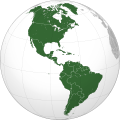
European
colonizationBy country North AmericaGreenland · Canada · United States · Jamaica · Mexico · Central America · El Salvador · West Indies · PanamaSouth AmericaRelated topics Indigenous American studies · Indigenous languages · Indigenous Movements · Indigenous art · Artists · WritersCategory · PortalCategories:
Wikimedia Foundation. 2010.




